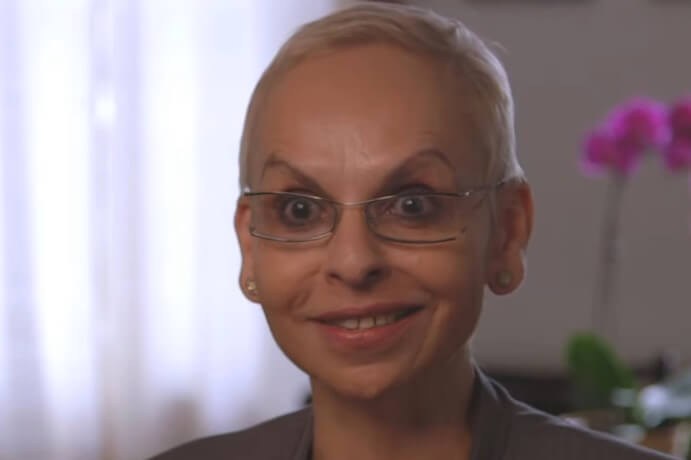Hanna Arie-Gaifman is Director of 92nd Street Y’s Tisch Center for the Arts. In addition to her literary initiatives–which include staged readings and dramatic adaptions of work by novelists, poets, playwrights and biographers–she curates a number of noteworthy concert series featuring a wide range of exciting and unusual chamber music performances.
Before joining 92nd Street Y, Arie-Gaifman was Dean of the Mozart Academy in Prague, Director of Artistic Management and International Relations of the Czech Philharmonic, and Director of Prague’s annual Musica Judaica Festival. A pianist with a PhD in comparative literature, Arie-Gaifman is a strong proponent of interdisciplinary work, and her Inflection Series features crossover work combining music, literature, dance, and visual art.
Tell me about programming George Benjamin’s Into the Little Hill alongside Toshio Hosokawa’s Futari Shizuka. Are there parallels between the two works? What can audiences expect?
We are extremely excited to present the U.S. premiere of Toshio Hosokawa’s Futari Shizuka alongside George Benjamin’s first opera, Into the Little Hill. There are indeed many parallels between the two works–not the least of which is that each piece has a strong political undercurrent which, despite the fact that both stories are centuries old, has an eerie resonance with our current age. In Futari Shizuka, our main character, Helene, the shipwrecked maiden we meet on the coast of the Mediterranean, is a refugee, a migrant, and it is her body that the Lady Shizuka occupies after having been trapped in the snow for over 900 years. Together, they sing of their shared sad fate and its cause–war, famine, fear, dishonesty, and political strife. Fear, dishonesty, and political strife are also at the center of Into the Little Hill, the marvelously ambiguous libretto of which tells a version of the Pied Piper story that emphasizes, as Martin Crimp notes, “the betrayal of our leaders.” Both works urge us to look on the words of our leaders with a critical eye. There will always be those who will try to sell us “alternative facts.”
In terms of what to expect, artist Alexander Polzin’s inventive production concept incorporates shadow theater in Futari Shizuka and Bunraku puppetry in Into the Little Hill. I’m really looking forward to seeing that on our stage. Not to mention the outstanding casts we’ve assembled, and the superb Talea Ensemble.
Toshio Hosokawa–Photo by Kaz Ishikawa
How does your programming approach converge and conflict with the 92nd Street Y’s mission?
By its very nature, the 92nd Street Y is an interdisciplinary institution. Here, music, literature, poetry, dance, politics, fitness, and fine arts intersect naturally at every age group. My background, too, is varied: I was educated as a musician, as a linguist, and as a literary scholar, and my approach to programming was formed by these interests. In the 92nd Street Y, I have found the ideal venue for which to program–my own interdisciplinary interests dovetail perfectly with the incredibly broad range of interests and offerings here.
In your position as a cultural curator in such a cosmopolitan centre as New York, how do you balance the importance of programming work by creators with a broad range of identities (across gender, ethnicity, nationality etc.) with artistic and financial concerns?
When I first sketch out a season, I begin by determining the story I wish to tell through the season, and then think of how that story might be best told–by which creators, by what methods–and what the conversations about and around that story might look like (whether within each subscription series, or amongst our cross-artform offerings). I am very lucky to work regularly with an incredibly diverse array of creators and am constantly hearing and seeing new work in order to ensure that the stories I tell are communicated in a compelling way that engages with different perspectives and cultures. Thinking this way helps me focus on what’s most important, so when I need to move to thinking about financial realities, I have a clear picture in mind of the story that needs telling, and the people who need to tell it.
Talea Ensemble–Photo by Beowulf Sheehan
How involved do you like to be with the development of the new works you programme and commission?
In a word, very. Being involved at all stages of development gives me the opportunity to grow with each work that we program and commission, and also to learn from each of the incredible artists with whom we work–not to mention occasionally being able to provide an ‘outside’ perspective as the process develops and the new work matures. Staying in touch with these works throughout their gestation period is a tremendous gift, and helps me communicate with our wonderful team here at the 92 Street Y, as well as our supporters, donors, and audience members.
What excites you most about cross-artform work?
It has no pre-existing form, format, or conceptions, and therefore is a haven for adventurous and creative minds. Cross-artform work could be anything, and I relish the variety and the opportunity it creates for artistic innovation. Last year, for example, we presented a project called Love in Fragments based on works for cello and violin by Bach, Widmann, Bartok, and others; the musicians were choreographed, and the cellist even had to play laying down! The interaction of the music and musicians with dance, sculpture, lighting, costume, and text (the piece was inspired by the writings of Roland Barthes) felt perfectly natural in this context, but for those expecting a cello concert, it might’ve been a bit disconcerting. Along with the tremendous variety of influences, references, and layers of meaning that it’s possible to glean from such presentations, it’s also an opportunity to innovate on the administrative side. Though it can be challenging at times, it’s exciting to devise new ways to solicit support for and market these genre-busting creations.

